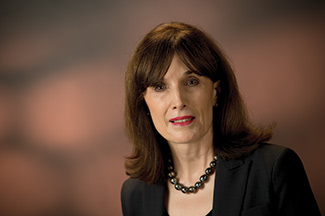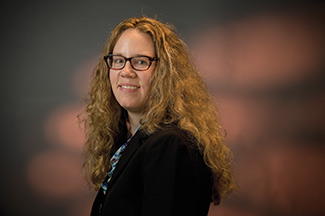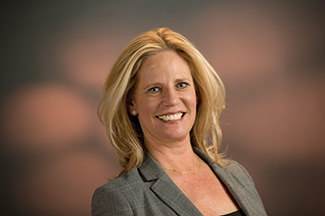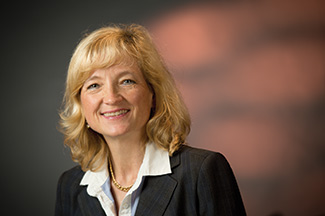Bergstrom lives by examples set on family farm
By: JESSICA STEPHEN//June 11, 2015//

Kristin Bergstrom has spent a lot of time being the only woman in the room. “It’s no longer true,” said Bergstrom, one of the first female shareholders at Reinhart Boerner Van Deuren.
“But it was true for a very long time.”
It wasn’t entirely unexpected.
After leaving her family’s dairy farm in Minnesota, Bergstrom quit college to start a family. By the time she returned to school, the women’s movement was in full force and the first generation of women lawyers were just taking their places at firms.
And while she wasn’t, strictly speaking, the very first, Bergstrom, who joined Reinhart in 1985, said she counts herself among the first wave of women to come into the law.
“I definitely felt a responsibility to survive,” Bergstrom admitted. “For years I’d walk out to my car and think my license plate should say, ‘Survive.’ Then I got to the point where I thought it should say, ‘Persevere.’”
If anyone was up for the challenge, it was Bergstrom.
“Kristin has always been so responsible,” said Denise Goergen, a fellow shareholder at Reinhart. “It’s an odd word to use for an adult, but it does define her.”
The oldest of seven children, Bergstrom and her siblings spent part of their childhood in a one-room school and the other “following my father all day on the farm like ducks.”
She went to college on a scholarship, buoyed by grants and loans and at least a couple of jobs. She embraced the example set by her mother, who was an equal partner and frequent laborer at the family farm.
“I sometimes think it’s so different than my partners, whose mothers stayed home and dads went to the office,” said Bergstrom, an employee-benefits attorney. “My mother was very much a partner. So, being in a role where you are working with men, where you’re expected to carry as much weight as everyone else, that was kind of what I expected. That’s how I saw the world, ‘Of course, you’re an equal partner. Of course, a woman steps up and works with the guys.’”
In fact, Bergstrom chose the law, in part, so she could have a chance at equality.
“I wanted to send my son to college. I didn’t want a low paying job, which is what traditional women’s jobs were then.”
Legal News
- FBI launches criminal investigation into Key Bridge collapse
- Man charged in slaying after woman’s leg found at Milwaukee-area park
- Minnesota man guilty in fatal stabbing of teen on Wisconsin river, jury finds
- Wisconsin teen sentenced in bonfire explosion that burned at least 17
- Wisconsin man who broke into home, ate victim’s chicken, slept in victim’s bed, receives prison and jail sentences
- Judge refuses to dismiss Hunter Biden’s gun case
- House passes reauthorization of key US surveillance program after days of upheaval over changes
- Milwaukee Police officer traveling to Georgia training retires before facing discipline
- Evers to ask legislature to approve largest increase in state support for UW System in two decades
- 7th Circuit Court of Appeals proposes new rules
- Federal agencies allege toxic work environment for women in new report
- Wisconsin man sentenced for sex trafficking a woman and a minor online
WLJ People
- Power 30 Personal Injury Attorneys – Russell Nicolet
- Power 30 Personal Injury Attorneys – Benjamin Nicolet
- Power 30 Personal Injury Attorneys – Dustin T. Woehl
- Power 30 Personal Injury Attorneys – Katherine Metzger
- Power 30 Personal Injury Attorneys – Joseph Ryan
- Power 30 Personal Injury Attorneys – James M. Ryan
- Power 30 Personal Injury Attorneys – Dana Wachs
- Power 30 Personal Injury Attorneys – Mark L. Thomsen
- Power 30 Personal Injury Attorneys – Matthew Lein
- Power 30 Personal Injury Attorneys – Jeffrey A. Pitman
- Power 30 Personal Injury Attorneys – William Pemberton
- Power 30 Personal Injury Attorneys – Howard S. Sicula










